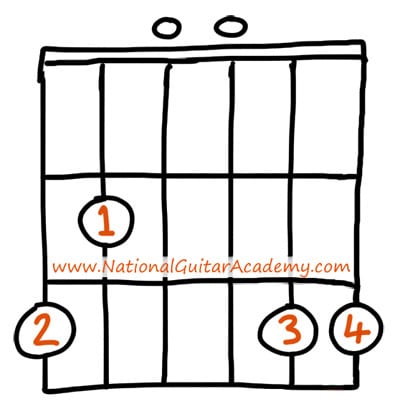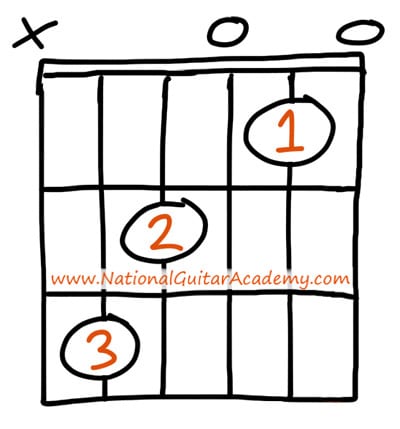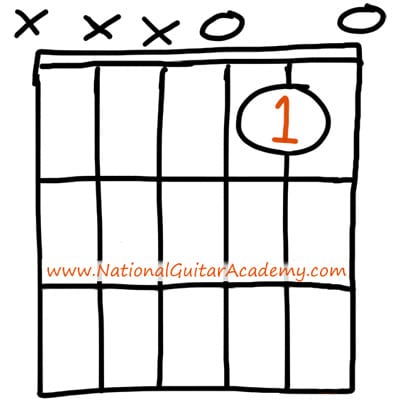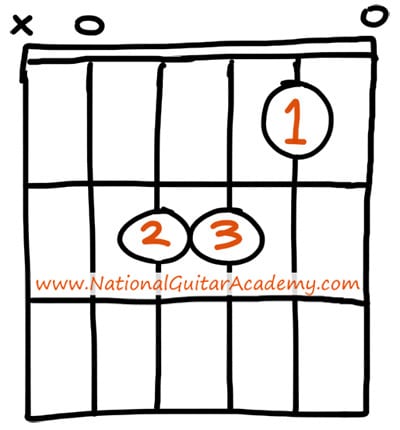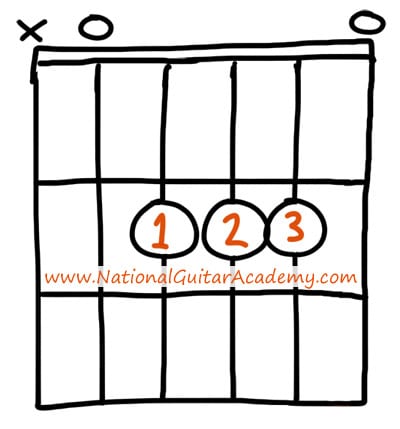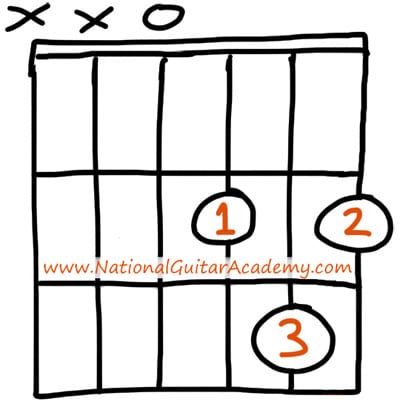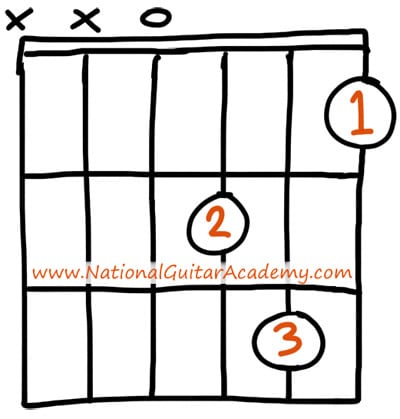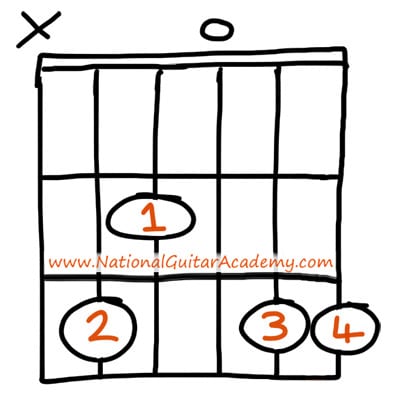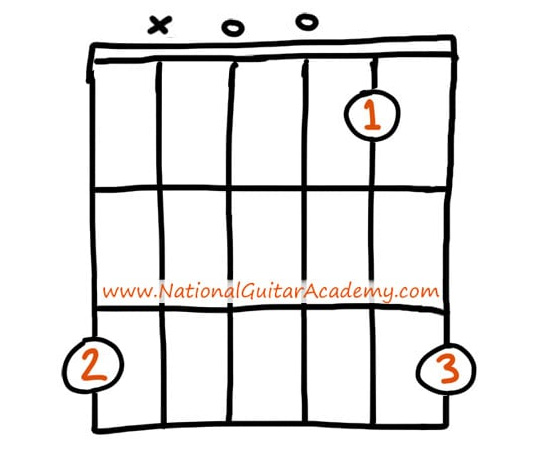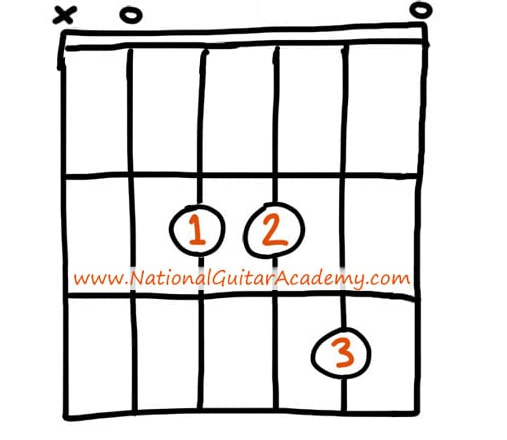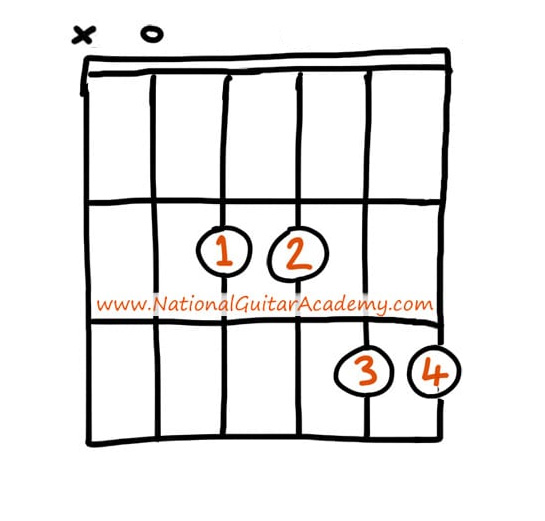Putting together a guitar chord practice routine can be difficult – Let us help!
Over 100,000 guitar-learners get our world-class guitar tips & tutorials sent straight to their inbox: Click here to join them
In this free lesson you will learn…
- The 7 levels of effective guitar chord practice
- Strumming patterns
- Arpeggios & why they’re important
- Why you need a practice journal
- How to create your own practice routine!
Building A Guitar Chord Practice Routine Is Important At Every Level
It doesn’t matter what level of guitarist you are in terms of skill or experience, the point stands:
- Without a good practice routine, you just can’t progress as fast.
- Without a proper routine to keep us in check, we can lose focus very quickly, and take long to progress.
We need a regimen we can fall back on that will always help push us forward, no matter how skilled we are.
One such regimen involves developing a healthy approach to guitar chord practice, and we’re going to teach it to you today.
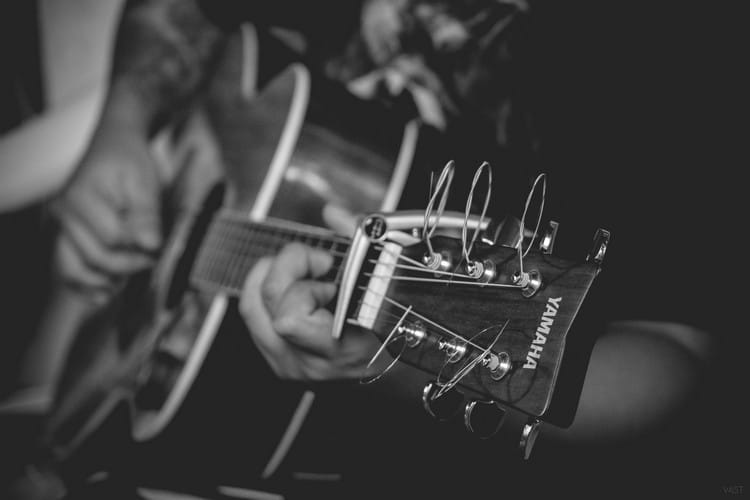
For right now, let’s forget about fancy guitar solos and massive scale shapes.
We’re going to break things down to brass tacks and get down to the best ways to improve not just your overall skill, but your guitar chord vocabulary as well.
For you budding shredders out there, you might be asking yourself why you should even bother learning chords at all. Why not just jump straight into scales?
The answer is below, so keep reading.

Why Are Chords So Crucial To Learn?
Guitarists who can shred up a storm are cool and all, but how do you think all of those guitarists got to where they are? How does one develop that level of dexterity to move through all of these shapes so easily along the neck? Is it magic? Is it a gift from a higher power?
No.
- It’s proper guitar chord practice – plain and simple.
- The ability to move through different shapes across the neck with ease comes from a good memorization of where those shapes are.
Sure, it can be argued that those shapes can be found in scales before they can be found in chords, but do you know what helps us understand scales better?
The chords that make up that scale.
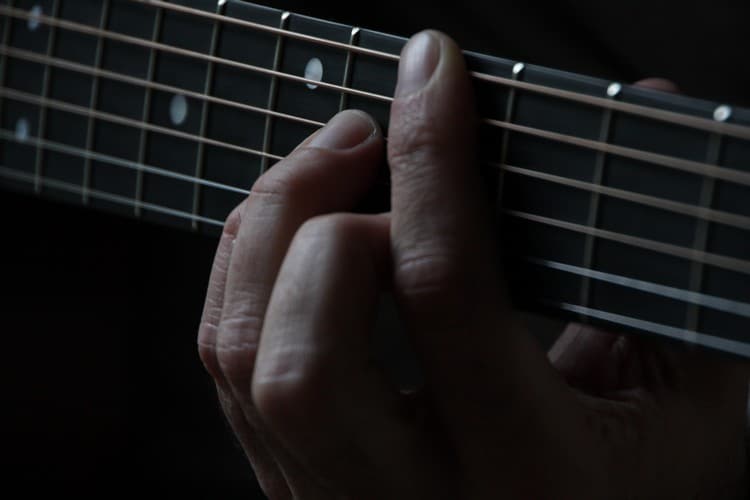
It all comes down to chords.
You can find the most complicated song in the world and we can guarantee you it has a steady chord progression lying somewhere in the mix, no matter what genre of music.
Effective guitar chord practice helps us level up our playing, and today we’re going to show you seven levels of guitar chord practice that will make a difference in your playing.
Let’s first answer the question: What is ‘effective’ guitar chord practice?
The answer is different for everyone, so let’s explore!

Creating A Guitar Chord Practice Routine That Suits You
Many of you that are reading this lesson are at a variety of different skill levels, and that means we can’t prescribe one fixed guitar chord practice routine for all of you.
What we can do, however is split the lesson into the seven most crucial levels for you to explore.
By the end of this lesson, you will have a better understanding of your own skill level, as well as what you need to build a guitar chord practice routine that suits your skill and playing style.
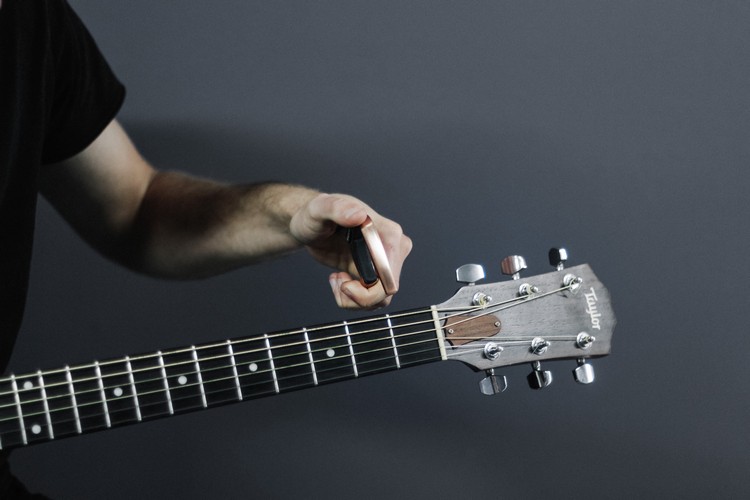
Pro Tip: You will hear us say this quite often at the National Guitar Academy, but you need to create a practice journal.
- You don’t need any specific type of journal for this, any old book will do just fine.
- Practice journals give us new perspective on our progress as guitarists, and let us keep track of how much we have learned from a certain element of the guitar.
- For effective guitar chord practice, keep track of the chords that you learn and the positions you play them in.
- It’s also always a good idea to keep track of how much time you spend per day practicing.
Apps like Toggl help us to time-manage and can give us a lot of insight into what we should be practicing more or less of.
Now without further adieu, let’s jump into the different elements of effective guitar chord practice!
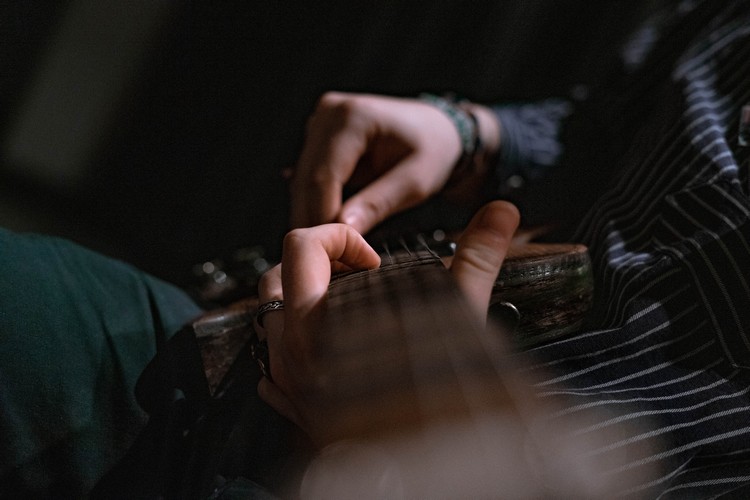
Learn 12 EASY beginner chords with our popular guide

✅ Stop struggling. Start making music.
✅ Learn beginner-friendly versions of every chord.
This is our most popular guide and it will improve your chord ability quickly! 😎
Get your own personalised guitar-learning plan 🎸
Get a custom guitar-learning plan here: Click here for GuitarMetrics™
World-Class Guitar Courses 🌎
Learn from the world's best guitar educators: Click here for our guitar courses
Guitar Chord Practice Level I: Learning In Halves
If you’re just getting started with the guitar, you’re in luck!
We’re going to take you from the very beginning, so grab a pencil and paper.
One of the first methods we can use for effective guitar chord practice at the beginner level is to learn our open position chords in halves.
- All this means is that instead of subjecting ourselves to the initial discomfort of full chords right away, we learn them in two pieces – Bass & Treble.
- For example, below you will find a full G major chord box followed by both of its halves split into the lower register and higher register.
G MAJOR (3 2 0 0 3 3)
(If you don't understand the above image please read our article "How To Read Guitar Chordboxes In 60 Seconds". It will make everything clear!)
BASS G MAJOR (3 2 0 X X X)
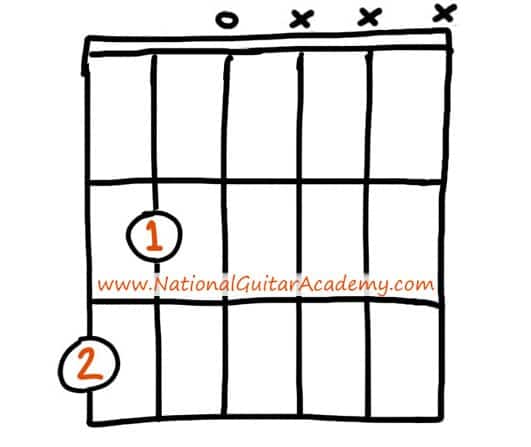
TREB G MAJOR (X X X 0 3 3)
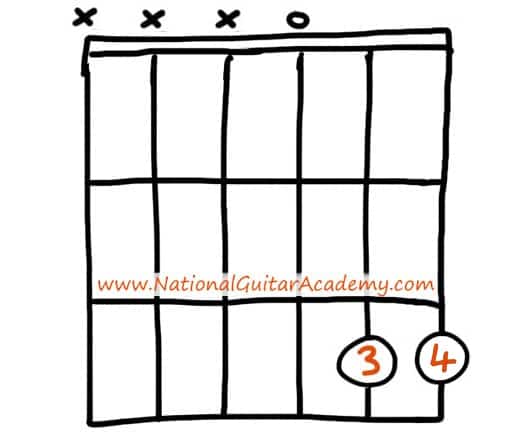
Notice how we split the chord down the middle? This rule can be applied to any chord.
- Even if you don’t have a split chord box showing you exactly how to break the chord up, just follow the strings on your guitar!
- Practice the lower and higher halves separately, then put them together once you feel confident!
This makes for great guitar chord practice as it helps us hear the individual parts of the chord before putting it together.
Let’s have a look at a few more examples below:
C MAJOR (X 3 2 0 1 0)
BASS C MAJOR (X 3 2 0 X X)
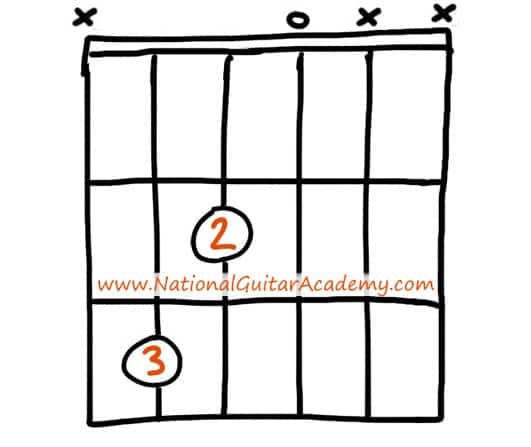
TREB C MAJOR (X X X 0 1 0)
A MINOR (X 0 2 2 1 0)
BASS A MINOR (X 0 2 2 X X)
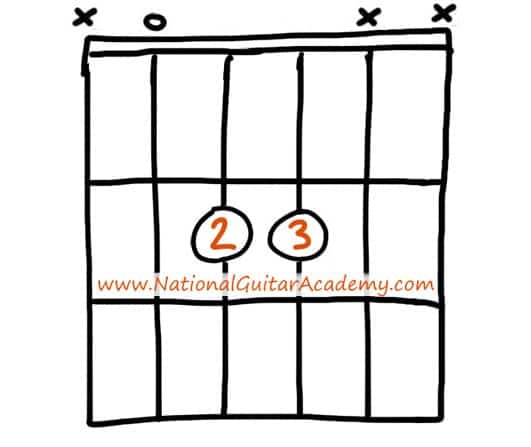
TREB A MINOR (X X X 0 1 0)
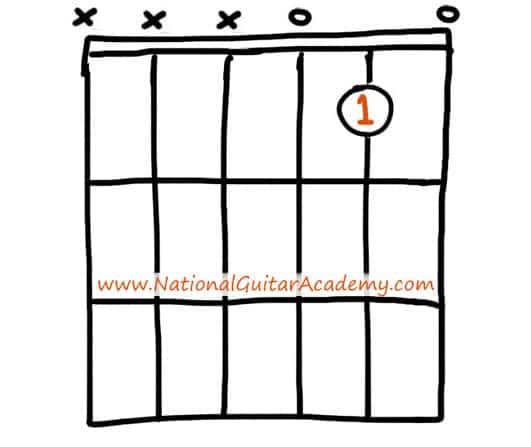
Guitar Chord Practice Level II: Full Chords
Splitting chords in half helps us learn chords, but it only gets us half of the way there.
Now we need to tackle them in full.
By this point you’ve built up a bit of muscle in your fingers, so let’s put that to good use!
Pro Tip: Don’t be afraid of splitting chords in half even as you progress to higher levels of guitar skill.
There’s never a bad time to break chords down into small pieces in order to understand them better.
Try these chords on for size:
A MAJOR
D MAJOR
D MINOR
Pro Tip: Start to get familiar with the similarities that different chords share.
- There are a lot of them, and understanding the different chord shapes can help us link different chords together as we go alone.
- You will notice that by moving your ring finger up from the 2nd fret on the B in A major to the 3rd fret, you can very easily move to a D major or minor chord.
- This leads us to our next guitar chord practice point: Transitions!
First however, check out a few more need-to-know bonus chords below:
C Major add9
Csus2
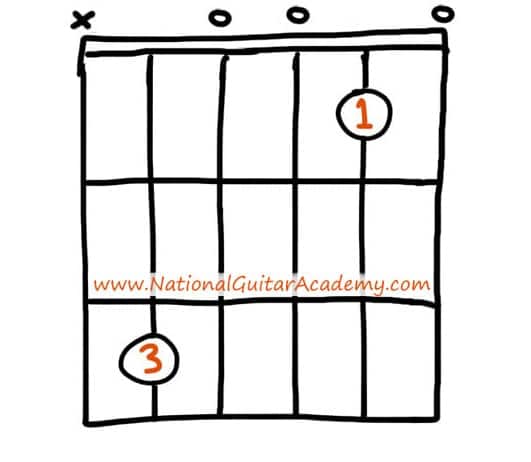
Csus4
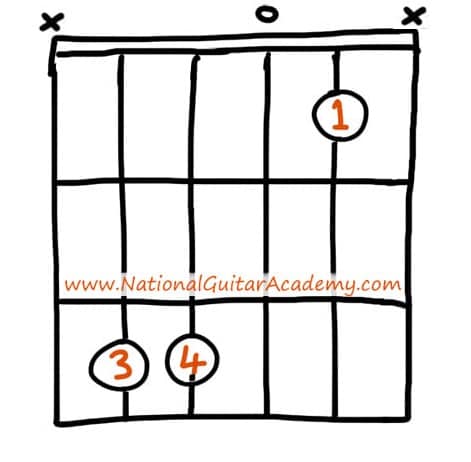
Gsus2
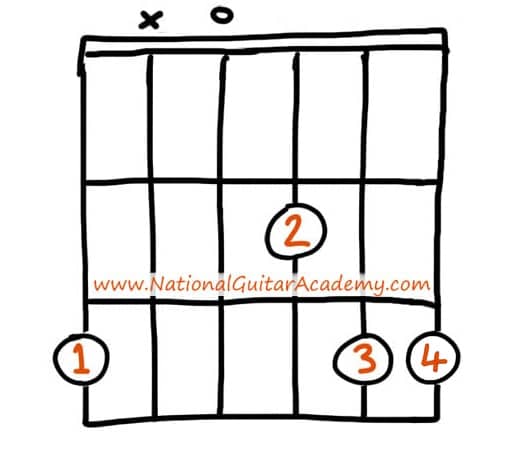
Gsus4
Asus2
Asus4
Guitar Chord Practice Level III: Chord Transitions
This one is important.
Once we’ve gotten a feel for playing full chords, we want to focus on moving from one to another with ease.
Pro Tip: This is a crucial element of your guitar chord practice routine.
As a rule of thumb whenever you learn a new chord, you should immediately try to pair it with another chord and focus on transitioning between them.
Transitions take practice, and any time we learn a new chord we will have to learn how to switch into it and out of it from one chord to the next.
For this guitar chord practice section, we’re going to try transitioning from a C major to an A minor chord. See below:
C MAJOR
A MINOR
These two chords are a great place to start because our index finger can stay rooted at the first fret on the B string. This gives us an anchor to work off of.
- Not all chord transitions are this easy, however!
- Some require a bit more movement than others, and you soon become familiar with making larger jumps across the fretboard.
Pro Tip: Practicing chord transitions to a metronome can help us steady our pace and keep our guitar chord practice sounding smooth.
If you don’t own a physical metronome, you can find one on Google here!
Let’s look at a four chord progression for something a bit more challenging!
C MAJOR
A MINOR
D MINOR
G MAJOR
Pro Tip: Make use of your pinky finger whenever possible! This finger is especially useful when switching from D minor to G major. Use your pinky to get to the 3rd fret on the high E string!
Download our lead guitar cheat-sheet to make things easier
It's hard to understand which scales work with which keys.
So we created a cheat-sheet! A key and scale-finder that you can use again and again.

Get your personalised guitar-learning plan 🎸
Get a custom guitar-learning plan here: Click here for GuitarMetrics™
World-Class Guitar Courses 🌎
Learn from the world's best guitar educators: Click here for our guitar courses
Guitar Chord Practice Level IV: Strumming
Welcome to Level 4! Here is where we start to gain some traction in the realm of pick control.
Pick control is important because it gives us more ability to express ourselves through strumming. Expression is important! After all, you want things to sound like you, don’t you?
- Strumming is a crucial part of your guitar chord practice routine and should never be overlooked.
- Creating a reliable set of strumming patterns within our guitar arsenal will make all the difference, as you will find.
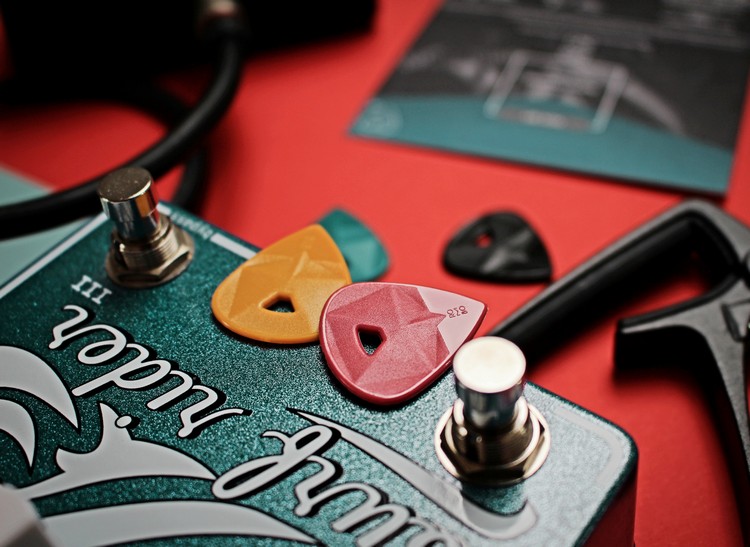
Check out these three strumming patterns below:
(‘*’ indicates a strum to be held for longer than the other strums)
Down*, Down*, Down-Up-Down-Up
Down-Up-Down-Up, Down* Up*
Down*, Down-Up-Down-Up, Down* Down-Up-Down-Up
Pro Tip: You can mix up these patterns any way you like using different tempos and strum lengths.
Experiment with strumming, as you can find a thousand different ways to play one chord progression. This is part of the fun of a good guitar chord practice routine!
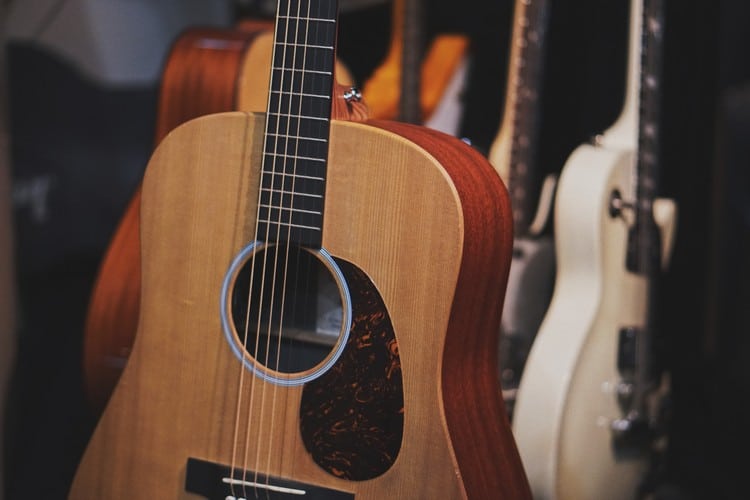
Guitar Chord Practice Level V: Combining Strumming With Chord Changes
This is where it all starts to come together.
Pro Tip: By now you should be feeling pretty limber, and that’s a good thing. However, too much strain can leave us exhausted.
Why not take five minutes and stretch first?
- This section is pretty straightforward – We’re going to start putting all of this knowledge to use in context.
- For this section, we want to make sure we’re feeling confident about transitioning from one chord to another.
To start with, we’re going to take that same chord progression we learned in Level 3 and apply it to the following strumming pattern from Level 4.
Pattern and chords below:
Down*, Down*, Down-Up-Down-Up
C MAJOR
A MINOR
D MINOR
G MAJOR
Pro Tip: Take your time with this! There’s no need to rush! A metronome is super handy in this section. Set it to something slow like 60 bpm and practice slow and quick strums back and forth. This will help you get a feel for how to fit different note values into a bar of music.
Count out loud with the following note values:
Quarter Note: 1-2-3-4
Eighth Note: 1-&-2-&-3-&-4
Now, onto one of our favourite guitar chord practice techniques: Arpeggios!
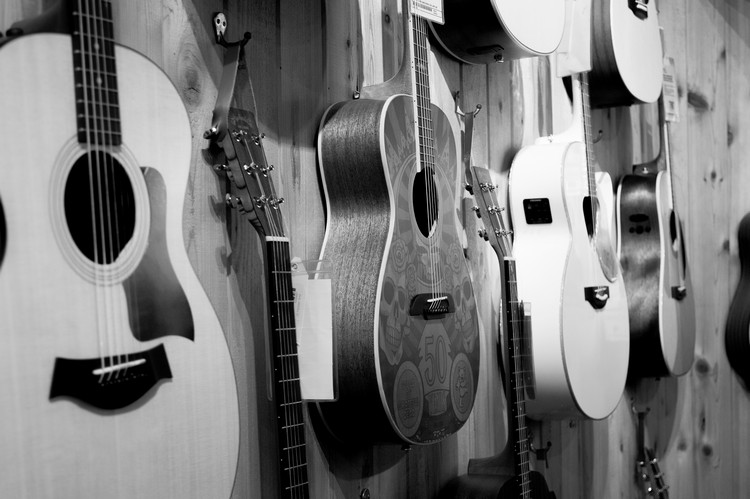
Guitar Chord Practice Level VI: Arpeggios
Want to know how to make your chords sound prettier while secretly checking to make sure you’re not accidentally muting any strings?
Of course you do – The answer is arpeggios!
Arpeggios are what happen when we separate a chord into its individual notes.
- Instead of strumming the chords we’ve learned so far today, let’s try playing each note of the chord in sequence.
- On top of that, we want to make sure we have positioned our hand in such a way where no string is being muted.
- We want all the notes to ring out together, so keep your ears open for mistakes and accidental mutes!
Let’s start with the same chord progression that we’ve been working with so far.
C MAJOR
A MINOR
D MINOR
G MAJOR
Arpeggios are an amazing tool for all musicians that help us hear the fine details of what we’re playing much better.
Our guitar chord practice routine should always consist of time spent on arpeggios, as they keep us the most alert to what is happening with the chords we are playing.
Don’t overlook this technique!
For a second arpeggio example, we’re going to look at a new set of chords: Suspended chords!
- We threw these in further up (and hopefully you practiced them) but now we’re going to drill you on it.
- Play arpeggios for each of these chords starting from the lowest string and playing to the highest. Then play from the highest string to the lowest.
C MAJOR ADD9
GSUS4
ASUS4
For a more detailed rundown on arpeggios, click here!
Guitar Chord Practice Level VII: A Little Bit Of Theory Goes A Long Way
Music theory can take us a long way in terms of our guitar chord practice regimen.
Learning the different musical keys and the chords contained within each can help us unlock new sounds and textures with the guitar.
- If you’re looking to step up your guitar game to Level 7, start by doing your research on music theory and how it can help your playing.
- Another thing you can do to benefit your routine is to begin looking for patterns on the fretboard.
- This will help you memorize chords, scales and just about everything else on the guitar.
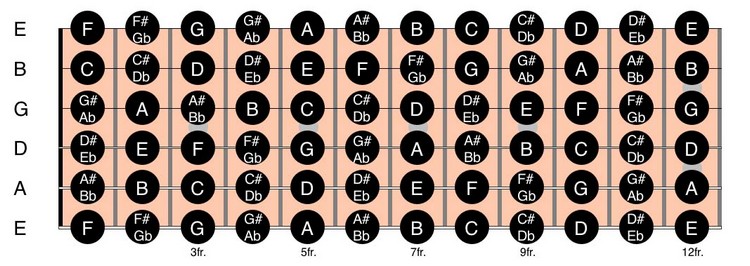
Pro Tip: Everything in music can be reduced to a pattern. Notice which notes are in the chords you’re playing? Look for them elsewhere on the fretboard – those same note patterns will occur elsewhere in very playable positions.
- For example, you will notice that the notes in the C major chord can also be played between the 8th and 10th frets on the treble strings.
- It’s also worth noting that these chords can be played in various octaves once you know where to play them along the fretboard.
- For a music theory rundown for beginners, click here.
Where Do I Go From Here?
Want more out of your guitar chord practice routine? We recommend:
- Jam with a friend to put your practice routine into play
- Expand on this lesson with your guitar teacher
- Watch this video of Paul Davids explaining chord tricks
Recommended Resources
If you enjoyed this free guitar to creating a healthy guitar chord practice routine, you’ll love the other free step-by-step guides that we have for you below!
- Music Theory For Beginners
- Guitar Arpeggios
- Guitar Chord Chart – Learn ALL the chords in ALL the keys!
- Open Chords
- Intermediate Guitar Lessons
What Type of Guitarist Are You?
Take our 60-second quiz & get your results: Take The Quiz
Join the world's best online guitar school 🌎
- Get your own personalised guitar learning plan (customised just for YOU).
- World-class online guitar courses. Learn at your own pace.
- Community Campus & Learning Forum - A friendly community! Connect with our team & students. 😊
- Beginner Song library with chordsheets, tabs and tips. (Songs suitable for all levels!)
- Regular live streams, seminars and Q&A sessions - Learn from world-class guitar educators. Get all your questions answered!
Click here to learn more about National Guitar Academy membership 
Cool Guitar T-shirts 😎
Look cooler! Check out our merch: Click here to see our merch store
Want free guitar tips and video lessons delivered to your inbox?
Join over 100,000 guitar-learners and subscribe to our guitar-tips-by-email service. (It's free.)
We'll send you a series of lessons that will move you to the next level of your guitar journey.
Learn how everything fits together quickly, easily and effectively. We share ninja tips (for instant fun!) but also timeless fundamentals that will deepen your understanding.

Popular Lessons
How To Learn Guitar: An 11-Step Programme For Beginners
How To Choose The Perfect Beginner Guitar
More Cool Guitar Stuff
Learn about National Guitar Academy: About Us
Join us on Facebook for daily guitar tips.
Listen to our Learn Guitar Podcast for rapid guitar progress.
Check out our free chord lessons.
Get our best guitar tips & videos
Where should we send it?
Where should we send it?
Get our best guitar tips & videos

